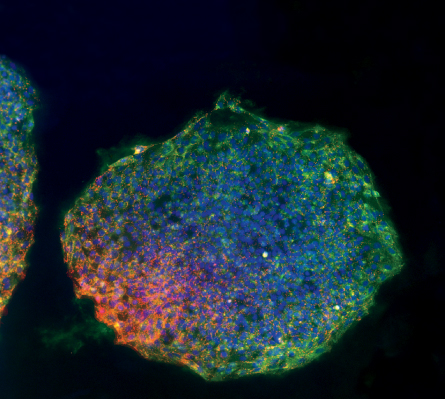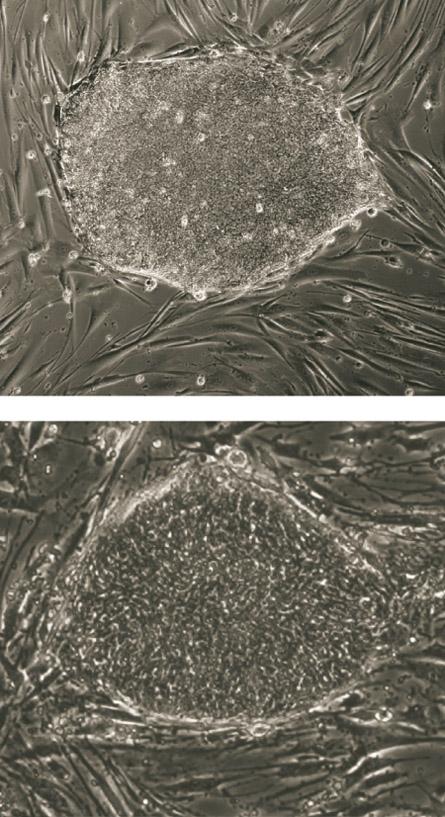- More than 2 years ago
Pod people may look a lot like the real thing, but — as the fictional town of Santa Mira finds out in Invasion of the Body Snatchers — they are disastrously different. The same may be true for reprogrammed stem cells.



These cells are designed to mimic embryonic stem cells and are grown in lab dishes by researchers, not pods by aliens. But scientists now worry that reprogrammed cells, like the duplicates that invaded Santa Mira, may not be wholly satisfactory replacements.
New research suggests that important differences may separate the two kinds of cells. Such differences could impair the ability of reprogrammed cells to make other cell types, which doctors hope to use to repair diseased and damaged tissues. Other limitations of the reprogramming process could leave transplanted cells more susceptible to diseases such as cancer, some scientists fear.
Every lab has its own recipe to convert mature skin and blood cells to a reprogrammed state — and comparisons show that some of these procedures work better than others. Time and patience, one study finds, may help erase lingering differences between the superbly flexible embryonic stem cells and their lab-made substitutes.
Not like the other
Embryonic stem cells are pluripotent, meaning they can become any type of cell. But isolating stem cells destroys the embryo from which they come, raising ethical concerns and funding barriers.
In 1996, the Dickey-Wicker Amendment banned federal funding for research that harmed human embryos. President George W. Bush allowed researchers to work with a small number of existing human embryonic stem cell lines, and President Barack Obama later opened research on newly created lines, provided they were made with private money. Now a federal court is in the midst of deciding whether Obama’s policy violates Dickey-Wicker.
When scientists learned that a few proteins could reprogram a skin cell into a cell that appeared indistinguishable from a stem cell (SN: 11/24/07, p. 323), there was great hope that the ethical considerations swirling around embryo-derived stem cells could be bypassed. Many expect that research on these new induced pluripotent stem cells, or iPS cells, might eventually lead to replacement tissue for sick and injured patients, no embryo needed.
“There’s a fever to make progress and translate this into clinical applications,” says bioinformaticist James Cooper of the University of California, Santa Barbara.
Teams have already made iPS cells from skin and blood cells and then coaxed those iPS cells into becoming heart muscles and brain and spinal cord neurons (along with other cell types) in the lab. Eventually, scientists would like to transplant tissues grown from these cells into the body to replace tissues damaged by heart attacks, accidents or diseases such as Alzheimer’s.
Reprogramming offers another possibility: Researchers could revert skin cells from people with a disease into iPS cells and then study the development of that disease in a petri dish.
But these hopes all bank on the premise that reprogrammed stem cells are as versatile and safe as embryonic stem cells. And niggling differences are making some scientists question that assumption.
Recent studies show that reprogrammed stem cells carry a molecular memory of their former identities (SN: 8/14/10, p. 15). Working with mouse cells, George Daley of the Harvard Stem Cell Institute and his colleagues showed that stem cells can hold onto the past. Making blood is harder for former skin cells than for reprogrammed cells from bone marrow (where blood is made), the team found.
Daley and his colleagues reported online July 19 in Nature that this reluctance to switch jobs is linked to chemical tags attached to DNA. The tags — in this case methyl groups — help to shut down genes as a cell develops an identity. A heart cell, for instance, will turn off genes needed to make liver, brain and skin cells.
Reprogramming should strip away the chemical tags, like dish detergent dissolving grease, leaving the resulting stem cells wide open to take on any identity, scientists had thought. For the most part, that’s true. But some residue seems to stay behind.
“Considering all the hoops that iPS cells have to go through, it’s amazing that they get as close as they do,” says UCLA cell biologist William Lowry. Still, his team has also found small differences between reprogrammed stem cells and embryonic stem cells — this time in the pattern of genes that are turned on and off.
Despite the differences, there are no consistent markers that peg a cell as being an iPS or embryonic stem cell, says Richard Young, a geneticist and mole-cular biologist at the Whitehead Institute and MIT in Cambridge, Mass. In a study in the Aug. 6 Cell Stem Cell, Young and colleagues report that chemical tags on DNA-associated proteins called histones are remarkably alike between the two types of stem cells.
Young and others are trying to find the best way to evaluate reprogrammed stem cells to determine if they really have reverted to a pluripotent condition. “We need to know if we ever get to this fully reprogrammed embryonic stem cell state,” he says.
A better recipe
Figuring out the details of why iPS and embryonic stem cells differ could help scientists reprogram cells more fully.
In another study in the Aug. 6 Cell Stem Cell, Lowry’s team reanalyzed data from several labs and showed that some reprogramming methods are better than others at creating reverted cells that mimic embryonic stem cells.
Cooper and Aaron Newman, also from UC Santa Barbara, report in the same issue of Cell Stem Cell that gene activity profiles of both iPS cells and embryonic stem cells vary depending upon the lab in which they were created.
Just as one pastry chef can transform flour and butter into a flaky pie crust while another — with the same ingredients — comes up with tough dough, labs and the people who work in them may have little tricks to move stem cells in the right direction.
“You want to make the secret sauce to get the cells to do what you want them to do,” Cooper says.
Perhaps scientists just need to find the right recipe to eliminate the differences. One missing ingredient may be time, according to a report in the August Nature Biotechnology.
Many of the differences between reprogrammed and embryonic stem cells disappear the longer the cells are grown in lab dishes, report Konrad Hochedlinger of Massachusetts General Hospital in Boston and the Harvard Stem Cell Institute and his colleagues. The reprogramming process could take several rounds of cell division to completely wipe away memories of a cell’s former identity, Hochedlinger says. “It tells us that you should give the cells some time before using them for any practical purposes.”
Despite efforts to fully reprogram cells, scientists don’t yet know what the consequences of differences would be. One worry is that reverted skin cells clinging to former identities may make proteins that interfere with a new career. Confused identities might push transplanted cells away from their mature state, bringing them one step closer to becoming cancerous. Incomplete reversion could also make it harder to tell whether defects identified in disease studies using iPS cells are caused by a genetic problem or by proteins left over from a cell’s former life.
But even if scientists can’t create a perfect embryonic stem cell replica, they may make something that’s close enough. “If it is safe and it does what you want it to do, maybe it doesn’t matter if there are 100 genes differentially expressed,” Lowry says.






